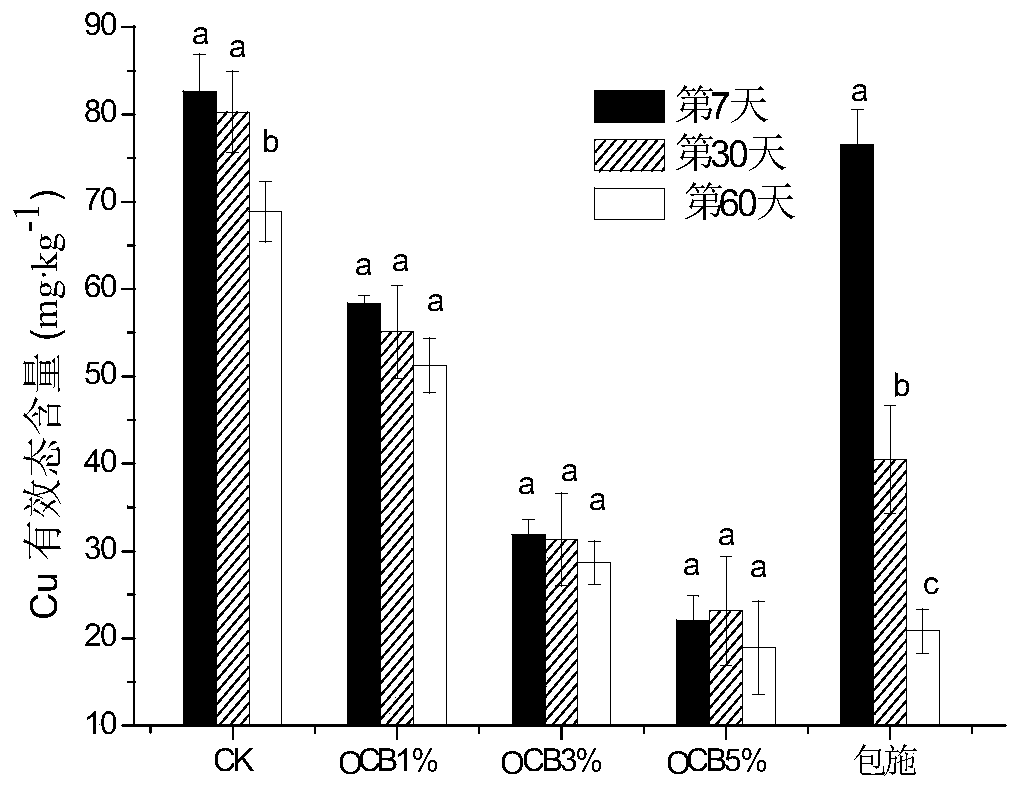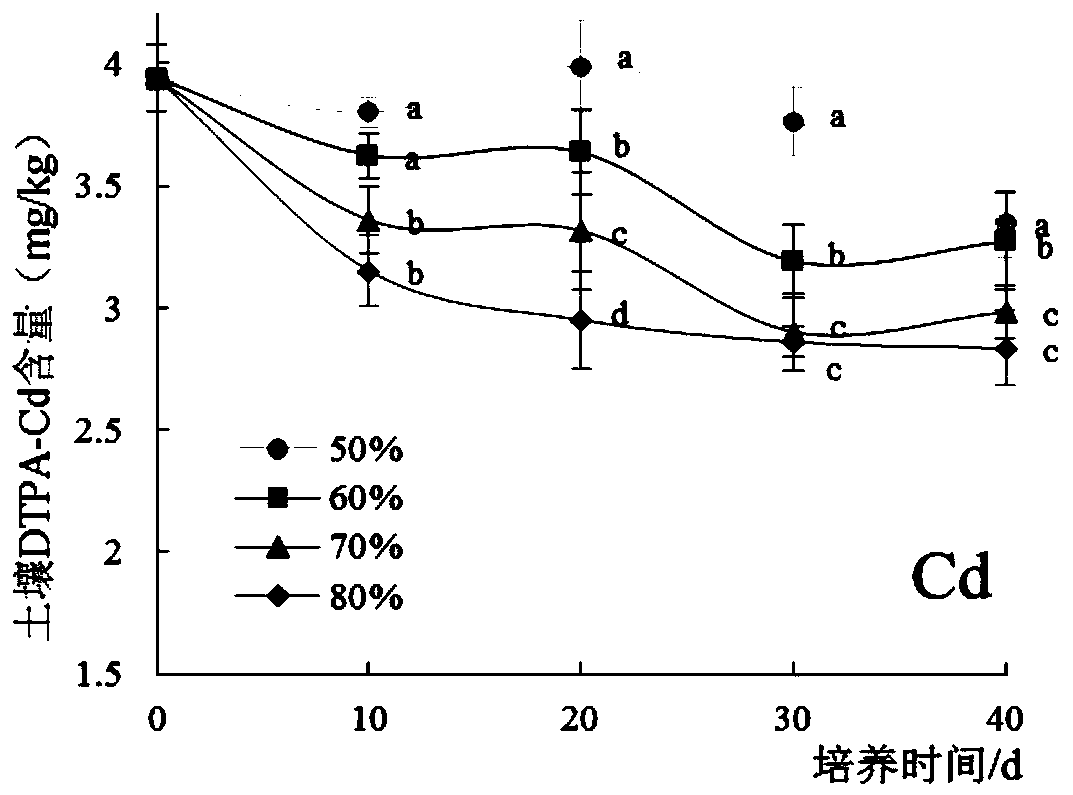Heavy metal passivation repair method capable of removing passivator from soil
A remediation method and passivating agent technology, applied in the field of soil remediation, achieves the effects of fast adsorption rate, high remediation cost, and avoiding potential environmental risks
- Summary
- Abstract
- Description
- Claims
- Application Information
AI Technical Summary
Problems solved by technology
Method used
Image
Examples
Embodiment 1
[0037] Example 1 Mixed application and package application on the effect of passivation of heavy metals in the soil
[0038] In this example, OCB passivator and Guixi red soil were taken as examples to study the effects of two methods of mixed application and package application on the adsorption effect of heavy metals in the soil, and the addition of OCB was 1%, 3%, and 5%. Depend on figure 1 It can be seen that with the increase of the amount of OCB added, the content of available Cu in the soil of the mixed application treatment was lower than that of the control without OCB, and decreased by 34.91%, 64.44%, and 76.19% respectively compared with the control after 60 days of cultivation. The influence of incubation time on the content of available Cu in soil was not significant. Different from the mixed fertilization treatment, the content of available Cu in the soil decreased significantly with the increase of the culture time. When the culture reached 60 days, the content...
Embodiment 2
[0042] The migration distance of embodiment 2 heavy metals in soil
[0043] Such as figure 2 As shown, for cinnamon soil and fluvo-aquic soil, at 10-30cm away from the passivator, the effect of reducing the available Cu content in the soil is obvious, which is equivalent to the passivation effect of mixed application. When the distance of passivating agent was greater than 30cm, the available Cu content in the soil increased significantly. Compared with the mixed application, the available Cu content in cinnamon soil and fluvo-aquic soil increased by 17.78% and 24.09%, respectively. Therefore, the distance to choose the passivator to be applied is within 30cm. Considering that it is used as an operation surface for farmland farming during the growth process, especially mechanical farming, so the burying distance of the passivator is selected to be within 25-30cm.
Embodiment 3
[0044] Embodiment 3 The influence of different water contents of soil on passivating agent remediation efficiency
[0045] The initial value of DTPA-Cd content in simulated polluted soil was 3.94mg / kg. After 40 days of pot experiments, the changes of DTPA-Cd content in the ryegrass plant-soil system were as follows: image 3 : The initial mass concentration of DTPA-Cd in the polluted soil is 3.94mg / kg, after 40 days of pot culture, it is found that the DTPA-Cd content of the water content is 50%, 60%, 70%, 80% treatment group from 3.94mg / kg Respectively decreased to 3.34mg / kg, 3.27mg / kg, 2.98mg / kg, 2.83mg / kg, Cd decreased respectively: 15.15%, 16.96%, 24.29%, 28.04%. It shows that with the increase of water content, it is beneficial for the heavy metal ions in the soil to migrate to the passivator package, thereby enhancing the passivation effect of MBC.
PUM
| Property | Measurement | Unit |
|---|---|---|
| diameter | aaaaa | aaaaa |
| particle size (mesh) | aaaaa | aaaaa |
Abstract
Description
Claims
Application Information
 Login to View More
Login to View More - R&D
- Intellectual Property
- Life Sciences
- Materials
- Tech Scout
- Unparalleled Data Quality
- Higher Quality Content
- 60% Fewer Hallucinations
Browse by: Latest US Patents, China's latest patents, Technical Efficacy Thesaurus, Application Domain, Technology Topic, Popular Technical Reports.
© 2025 PatSnap. All rights reserved.Legal|Privacy policy|Modern Slavery Act Transparency Statement|Sitemap|About US| Contact US: help@patsnap.com



